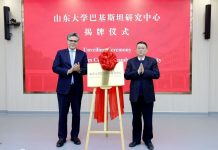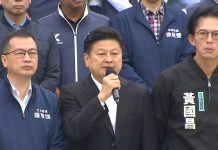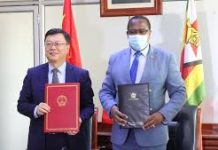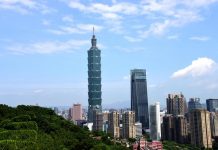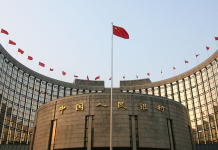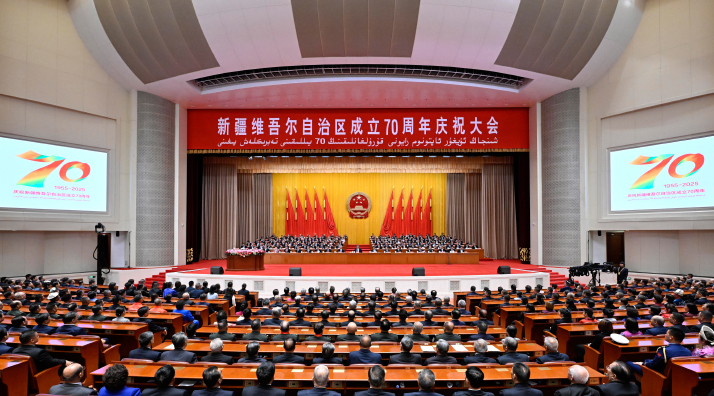
The smoky aroma of sizzling barbecue fills the evening air in Urumqi, capital of Xinjiang Uygur Autonomous Region, mingling with the sweet scent from fruit stalls and the pulsating energy of the crowds at the city’s International Grand Bazaar. As daylight fades, building facades transform into colossal canvases for a spectacular light show, weaving a luminous tapestry celebrating the 70th founding anniversary of the autonomous region.
This vast land, accounting for one sixth of China’s territory, stands as a vibrant tapestry of diverse ethnic cultures and a major hub along the Belt and Road Initiative, a China-proposed framework that boosts connectivity along and beyond the ancient Silk Road routes. Its 70-year journey of development is now being celebrated across the region.
A grand gathering was held on September 25 in Urumqi in celebration of the 70th founding anniversary of the autonomous region, which was attended by Chinese President Xi Jinping, along with other participants. A themed exhibition in Urumqi offers a panoramic view of these achievements, showcasing the unity, diligence and perseverance of Xinjiang’s people over the past seven decades. On display are historical footage, industrial products, restored scenes of a department store, poverty alleviation achievements, ethnic unity exhibitions and maps illustrating the region’s increasing openness.
During a September 24 visit to the exhibition, Xi emphasized that the profound changes in Xinjiang over the past 70 years are a vivid reflection of the historic process of national rejuvenation, noting that the Communist Party of China (CPC)’s policy for the governance of Xinjiang in the new era is both scientific and effective, and must be adhered to for the long term.
On the same day, after listening to work reports from the CPC Xinjiang regional committee and the regional government in Urumqi, Xi urged the autonomous region to build a socialist modern Xinjiang that is characterized by unity, harmony, prosperity, affluence, cultural progress and a sound eco-environment, where people live and work in peace and contentment.

Lived experiences
The region’s progress is detailed in a white paper titled Guidelines for Governing Xinjiang in the New Era: Practice and Achievements, released by the State Council Information Office on September 19. According to the document, Xinjiang’s GDP grew from approximately 749.95 billion yuan ($105 billion) in 2012, the year when Xi was elected general secretary of the CPC Central Committee, to over 2.05 trillion yuan ($287 billion) in 2024, exceeding the 2 trillion yuan threshold for the first time with an average annual growth rate of 7 percent. Per-capita GDP increased from 33,495 yuan ($4,700) to 78,660 yuan ($11,000) during the same period, while general public budget revenue jumped from nearly 90.9 billion yuan ($13 billion) to approximately 240.97 billion yuan ($33 billion)—an average annual increase of over 10 billion yuan ($1.4 billion).
These macro-level achievements are mirrored in the daily local life. Gu Xiangfeng, who has been a bus driver in Urumqi for three decades, shared his observations at the grand gathering in celebration of the 70th founding anniversary.
“When I started working, Urumqi’s roads were mostly gravel, turning muddy with rain or snow. The old gasoline buses were like steamers in summer and iceboxes in winter.” Today, bumpy dirt roads have been replaced by flat asphalt avenues, and green new energy vehicles have superseded the old buses. “It’s common now to see visitors from across the country capturing the city with their phones,” he added.
The transformation is equally palpable in pastoral areas. Martinbek Muratkhan, a 63-year-old retired Kazak tax official from Fuyun County, Altay Prefecture, noted, “As a nomadic people, we used to move frequently with our herds, without a permanent home. Now, the government has built settled housing for us.” Recalling his childhood, he said, “The school was very far away, and sometimes we had to ride a bull to get there. Now, school buses pick up children at their doorsteps.” This transition from nomadism to settled communities sparked a fundamental shift for many families.
Improvements also extend to daily life here. “In the past, we often didn’t have enough food. Now, we have such abundance and quality that we actually need to watch our diets,” Martinbek said. These advances are reflected in health outcomes: Average life expectancy in Xinjiang has risen from 30 years in 1949 to over 70 years today.
“Now it is very convenient for us to get medical care,” he said. The white paper shows that by 2024, the region’s public health system comprised more than 19,000 medical institutions and 314,600 healthcare professionals. A total of 86.05 percent of counties had established closely integrated medical consortia, with all township health centers and village clinics meeting operational standards. This tiered system ensures that local residents can access care for minor issues within their communities, common diseases at county-level facilities, and serious conditions within the autonomous region.
Progress in public infrastructure, too, has been unmistakable. Martinbek recalled that traveling from his village to Altay once took over 10 hours; now, it takes just two. Not only is travel within Xinjiang more convenient, but connections beyond the region have also vastly improved.

Rediscovering Xinjiang
“Even as someone who grew up in Xinjiang, I feel I have to rediscover it each time I return for inspiration,” Huang Jianxin, a local painter, told Beijing Review. Born in 1949, he moved to Hotan as an infant and has lived there ever since. Specializing in Xinjiang’s landscapes, with two works displayed at the Great Hall of the People in Beijing, Huang remarked, “In recent years, while sketching here, I’ve been struck by how tremendously the region has changed.”
During a recent trip to Tashkurgan in south Xinjiang, he observed that the number of decent hotels had surged from two a decade ago to over 140—a 70-fold increase. He also fulfilled a long-held dream by visiting Waqia Township, previously inaccessible due to poor roads. “I’d wanted to go since the 1980s or 1990s, when it took two days to get there. Last year, a concrete mountain road reduced the journey to three hours by car, with paved roads leading to every household. Finally seeing Waqia’s scenery was like discovering a hidden paradise,” he said.
The white paper notes substantial transportation upgrades: The highway network expanded from 165,900 km in 2012 to 230,000 km in 2024, reaching all prefectures and over 90 percent of counties. Railway mileage grew from 4,914 km to 9,202 km, connecting all prefectures and more than 80 percent of counties. The region is now served by 595 civil air routes, including 25 international routes to 17 countries and regions, forming an aviation network that links east and west. Xinjiang has also mapped out plans for 10 types of infrastructure networks covering railways, highways, aviation, energy, logistics and computing.
The upgraded transportation network has largely boosted tourism in the region. Huang believes tourists are increasingly drawn not only to Xinjiang’s natural beauty but also to its cultural richness. The region’s multi-ethnic character has become a tourism highlight, with growing interest in local handicrafts.
Ayiguli Maimaiti, a 48-year-old Uygur woman, moved from Kashgar to Urumqi with her husband Ainijiang Younusi 30 years ago to pursue their craft. Both hail from artisan families—Ayiguli’s father made Yingjisha knives. Reflecting on her childhood in a mud-brick home in Kashgar’s Ancient City, she recalled her father’s struggle to support the family through knife-making. Today, she told Beijing Review, artisans find it easier to earn a living thanks to tourists’ growing appreciation for Xinjiang’s handicrafts.
The couple now runs a shop at the Grand Bazaar specializing in painted drums and handmade instruments, a trade their two sons have continued by opening their own shops in Urumqi. To them, the bazaar is a wall-less stage for ethnic interaction, where Uygur instruments, Kazak songs and tourist laughter intermingle. Their dozen or so instruments offer visitors a window into Xinjiang.

The white paper highlights efforts to integrate culture and tourism, enabling visitors to experience both Xinjiang’s landscapes and its profound culture. A development plan aims to build cultural and tourist industry clusters worth over $1 trillion ($141 billion). Initiatives like the Taklimakan Rally, Tour of Sayram Lake Road Cycling Race and Freeride World Tour promote sports tourism, with the industrial cluster effect becoming increasingly apparent. Tourist visits to Xinjiang surged from 48.6 million in 2012 to 302 million in 2024—a 6.21-fold increase—while tourism revenue reached 359.5 billion yuan ($50 billion) in 2024.
President Xi urged for the further promotion of cultural tourism on September 24, enhanced ecosystem preservation, and the accelerated development of Xinjiang as a core area along the Silk Road Economic Belt.
Huang emphasized Xinjiang’s growing role within the Belt and Road Initiative. “With visa-free access to five Central Asian countries—Kazakhstan, Uzbekistan, Kyrgyzstan, Tajikistan and Turkmenistan—more international tourists will come, strengthening ties between Xinjiang and Central Asia,” he said. Noting an upcoming oil painting exhibition in Kazakhstan, he added, “More artists from Central Asia will likely visit Xinjiang. The Belt and Road is not only an economic corridor, but a cultural one as well.” BR

(Reporting from Xinjiang Uygur Autonomous Region)
Copyedited by Elsbeth van Paridon
Comments to yuanyuan@cicgamericas.com
__________
Principles and Requirements
CPC Guidelines for Governing Xinjiang in the New Era: Practice and Achievements, a white paper released by the State Council Information Office in September, has outlined the Party’s vision for Xinjiang’s governance. Some of its main components follow:
To govern the region in accordance with the law, we should uphold Xi Jinping Thought on the Rule of Law, advance law-based governance, promote its concept across society, adhere to its principles, and implement its requirements in all sectors of the work related to Xinjiang. We should employ law-based thinking and approaches to forestall risks, combat crimes, handle problems, and address disputes, and strengthen law-based and persistent efforts in combating terrorism and maintaining stability, thereby ensuring that all the work related to Xinjiang is carried out under the rule of law.
To maintain stability through ethnic unity, the fundamental issue is to rally people’s support. We should regard ethnic unity as the lifeline of the people of all ethnic groups, safeguard the unity of the Chinese nation, and continue to foster a stronger sense of the Chinese nation as one community. We should make systematic efforts to ensure that religions in China conform to China’s realities, to unite the people of all ethnic groups closer around the Party, and to forge tremendous momentum to build a beautiful Xinjiang.
To strengthen cultural identity and bonds, we should see that people in Xinjiang identify with the Chinese culture. Upholding the core socialist values, we should develop advanced socialist culture, promote revolutionary culture, carry forward the best of traditional Chinese culture, and build a spiritual home shared by all the Chinese people. We should provide education and guidance to the people of all ethnic groups to strengthen their sense of Chinese national identity, and reinforce their political commitment and win their support, thus consolidating the ideological foundations for social stability and lasting peace and security.
To bring greater prosperity to Xinjiang and its people, we should fully and faithfully apply the new development philosophy on all fronts in line with the strategic positioning of Xinjiang in building a great modern socialist country. Giving full play to Xinjiang’s advantages in geographic location, resources, and policies, we should actively support Xinjiang in serving and integrating with the new development dynamic and promoting high-quality opening up. We should advance high-quality development centered on the people’s wellbeing, and ensure that the benefits of development improve the people’s wellbeing and win their support.
To develop Xinjiang from a long-term perspective, we should uphold and strengthen the Party’s overall leadership and advance the great new project of strengthening the Party in the new era. We should foster highly competent officials based on the criteria for assessing the caliber of officials in the new era, maintain our strategic resolve, and make meticulous plans before taking any actions. We should pursue progress while ensuring stability, devote continued and long-term sustained efforts in our work, and address deep-rooted problems, to lay solid foundations for achieving the overall goal of the work related to Xinjiang. –The Daily Mail-Beijing Review news exchange item

